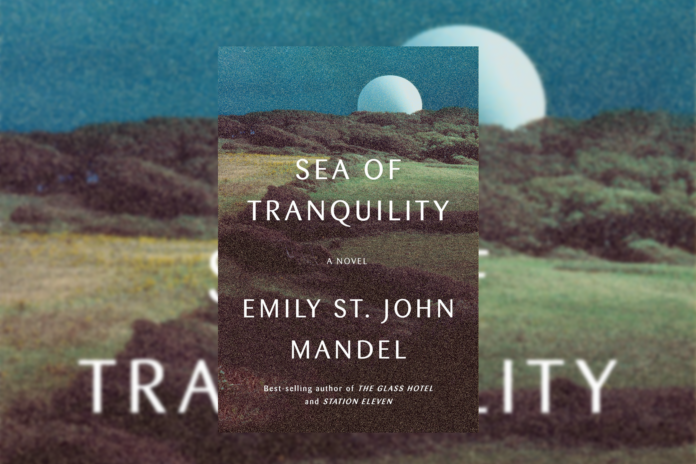
Reading is back. Long considered a medium near death, cast aside in the age of video games, binge-watching, and cell phones, people have begun to rediscover the simple joy of reading a book.
It’s recently become a mainstream niche, driven by social media, as everything is now. People post their Goodreads info and engage in discourse on “book-tok.” To be an armchair psychologist for a moment: I think many people read a lot when they were kids, stopped, were insecure about it, and desperately wanted to re-engage in this hobby, and we just needed permission to do so. Something that told us “It’s okay to do this, it’s cool, even.”
Why? What is the point of reading? What is the point of books?
These are the questions that formulated as I read “Sea of Tranquility” over winter break. Written by Emily St. John Mandel, the author of “Station Eleven” – my third favorite book of all time– the story centers around a mysterious time anomaly that connects the lives of people across multiple centuries. The first chapter takes place in the 1900’s, the last takes place in the 2400s. The story is mostly linear but hops around between eras at times.
I would not issue a spoiler warning for most books, as there is too much content to ruin with one or two spoiled moments. However, this book is quite brisk and thus easier to spoil. It’s a fairly standard 255 pages but it is deceptively short, with a story broken up into small chunks, including some one-page chapters (some as short as one sentence, if I recall correctly). It’s easy to read, I think it took me less than four hours to go through the whole thing.
This spoiler warning leads me to my main criticism: for a story that presents itself as an epic time opera, there isn’t that much going on. The future it presents has one interesting wrinkle in Night City. It’s a moon base that resembles a normal American city, complete with suburbs, whose artificial lighting system gave out, trapping it in a perpetual night for decades. There’s a brief mention of hovercars and worker robots and such, but besides this, the setting is generic, it might as well not take place in the future at all.
The same is true for the time travel. Most great sci-fi stories revel in their conceptual nature, offering rich, complicated descriptions of how things work, and exploring the mechanics of these out-there ideas. Here? The time travel amounts to “sitting in a chair and activating a device.”
The reviews on the back cover described it as “intellectually playful,” but besides a few meta-textual nods, like “Edwin St. John. Andrew,” a character named after the author, there’s nothing all that clever. The anomaly at the center of the mystery turns out to be one of the protagonists, the oddly named Gaspery-Jacques, existing at several times at once. The actual tear in spacetime was caused by him talking to his 80-year-old self in an airport. Now, this works, it functions as a plot twist, and it’s not illogical or tonally askew. But it’s a twist so obvious that I was legitimately mad that I didn’t figure it out early. The cover also describes this book as “a virtuoso performance.” Not even close to being true.
Okay, so why am I talking about a book I seemingly have nothing good to say about?
Well, its most interesting quality, and the reason I decided to write about it in the first place, is because it is begging to be adapted. Through every page of every chapter, it is on its hands and knees, pleading with Hollywood to buy the rights to turn it into a movie.
Specifically, a Christopher Nolan movie. It’s all about messing with timelines and stories within stories, the exact kind of pop-intellectualism he would have a field day with. It got to the point that when I was reading it, I was picturing the scenes unfolding in his style, I could see how he would frame each shot and interpret each sequence. It was uncanny.
And I think this is why so much of it is so vague, it’s allowing room for someone else to interpret the sci-fi elements. The prose isn’t very evocative or fanciful because it’s waiting for someone else to craft the visuals.
This feeds into my main questions. Why is this a book? I wanna stress here that I’m a fan of Emily St. John Mandel, and this is a good book that I enjoyed reading. But why does it exist? She’s a skilled writer, with some level of clout in Hollywood. “Station Eleven” was already adapted into an HBO miniseries (that might be better than the book, but I digress.) So why didn’t she just write a script?
These are mostly rhetorical questions. But if there’s a real answer, I think it’s that this is the only reason books are still written in any meaningful capacity. Their primary purpose is to be a well of ideas for Hollywood to draw from, an infinite creative resource. Another way to avoid paying people to come up with things to write.
I don’t know if this is all good or bad, but I know it serves to make “Sea of Tranquility” a solid 6/10.
For comments/questions about this story, DM us on Instagram @thewhitatrowan or email thewhit.opinioneditor@gmail.com.





